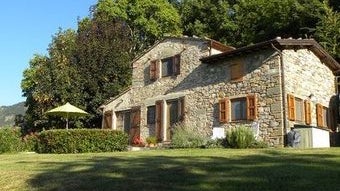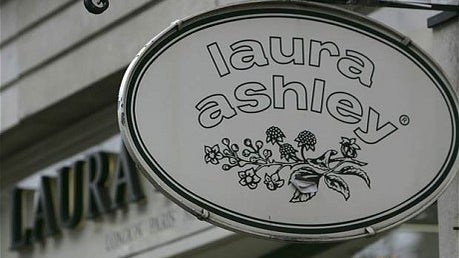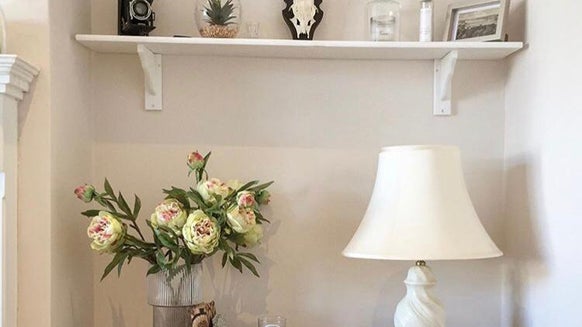Buying Guide: Preloved Ercol Furniture

Buying Guide: Preloved Ercol Furniture
Introduction

When it comes to iconic British furniture, few brands resonate as deeply as Ercol. For the uninitiated, Ercol furniture isn't just furniture; it's a journey through time, a testimony to impeccable craftsmanship and innovative design that has spanned almost a century. This revered brand has not only endured but flourished, finding its place in countless homes across Britain and beyond. Its vintage pieces, often found on platforms like Preloved, still exude the same charm and allure as they did decades ago. But to truly appreciate the magic of Ercol, one must delve into its origins and understand the ethos that underpins every piece.
The History and Rise of Ercol Furniture
In the bustling 1920s, amidst an era of change and innovation, Lucian Ercolani, an Italian furniture maker with a vision, laid the foundation for what would become one of the UK's most iconic furniture brands. With roots stretching back to Italy, Ercolani brought with him a rich tradition of craftsmanship and an eye for detail. But he sought to do more than just create furniture; he wanted to revolutionise it.
World War II proved to be a tumultuous period for many businesses, but for Ercol, it was a time of adaptation and resilience. While many companies grappled with uncertainty, Ercol, with its unwavering commitment to the nation, pivoted to produce tent pegs for the government. It might seem like a deviation from their core, but it showcased Ercol's versatility and commitment to the greater good.
The post-war era, however, was when Ercol truly came into its own. Britain, recovering from the ravages of war, faced a shortage of quality raw materials. The challenge was clear: produce high-quality furniture that would not just serve a purpose but stand the test of time. Ercol answered this call in 1944 with a commission that would forever etch its name in the annals of British furniture history. Tasked with producing 100,000 chairs that were both durable and affordable, Ercol rose magnificently to the occasion. This was more than just a business endeavour; it was an opportunity to redefine British homes, and Ercol seized it.
The Unique Appeal of Ercol Furniture
What truly distinguishes Ercol from countless other furniture brands is its pioneering spirit. Under the astute guidance of Lucian Ercolani, the company ventured into uncharted territories, utilising wood types that many had written off as unsuitable for furniture-making. This audacious approach not only set Ercol apart but also underscored its commitment to sustainability long before it became a global trend.
Steam-bending, a process that might sound arcane to the modern ear, became one of Ercol's signature techniques. By manipulating wood with steam, Ercol craftsmen could mould and shape it in ways previously deemed impossible. This not only allowed for more intricate and elegant designs but also added to the durability and longevity of each piece.
And then there are the collections – each a masterpiece in its own right. Among them, the Windsor and Originals have achieved almost legendary status. Their timeless aesthetics, blending the old with the new, resonate with a wide range of audiences, from vintage aficionados to contemporary design enthusiasts. But beyond the designs and techniques lies the true essence of Ercol: its soul. This is best epitomised by the community of 'Ercoloholics'. Their unwavering passion for Ercol, from its chairs to its loveseats, is a living testimony to the brand's enduring appeal. They don't just own Ercol furniture; they cherish it, creating a legacy that they pass on through generations.
How to identify Ercol furniture

In today's age, where replicas and counterfeits abound, identifying genuine Ercol furniture can be a challenge, particularly for those unfamiliar with the intricacies of design and craftsmanship. However, when it comes to Ercol, there are tell-tale signs and markers that can guide even the untrained eye in identifying a genuine piece.
The first port of call for any Ercol enthusiast or potential buyer should be the Ercol catalogue archive. This treasure trove offers a comprehensive visual journey through Ercol's illustrious history, providing a detailed glimpse into the design evolution across decades. Not only can one trace the lineage of a particular piece through this archive, but it also serves as an invaluable tool to compare potential purchases, ensuring they haven't undergone any significant unauthorised modifications.
However, while designs and styles have evolved over the years, certain signature features remain quintessentially Ercol. Early pieces, for instance, embraced a more robust aesthetic, with intricate carvings etched into figured oak. As the decades progressed, especially around the 1960s, the design philosophy underwent a shift. The Ercol pieces from this era, which many today instantly recognise, are characterised by their elegant style, complete with spindles gracing their backs and distinctively outward-sloping chair legs. These designs, though rooted in a specific era, have an enduring appeal, with variations still rolling off Ercol's production lines today.
Why is Ercol so expensive?
A cursory glance at any Ercol piece and one is immediately struck by the quality of the wood. The grain, the finish, the texture – every aspect speaks of a meticulous selection process and an unwavering commitment to quality. But the question that often arises is: "Why is Ercol so expensive?" The answer lies in the wood.
Traditionally, Ercol craftsmen primarily employed elm, beech, or pine in their creations. These woods, known for their durability and aesthetic appeal, formed the backbone of many iconic Ercol pieces. However, Ercol's innovation didn't stop there. As the brand evolved, so did its palette of materials. Collections began to feature other types of wood, such as ash, oak, and walnut. While these might not be the first names that come to mind when one thinks of Ercol, they are a testament to the brand's adaptability and its commitment to pushing the boundaries of design and craftsmanship.
But it's not just about the type of wood; it's about its treatment. Ercol pieces are renowned for their finishes. Depending on the type of timber used, Ercol furniture can sport clear, light finishes that exude a contemporary vibe or darker, more traditional finishes that hark back to an older era. This versatility in finish ensures that Ercol pieces can seamlessly fit into a plethora of interior design schemes, from the ultra-modern to the classically vintage.
The sheer longevity of many Ercol pieces, some of which have been passed down through generations, stands as a testament to the brand's manufacturing standards. Each piece isn't just designed; it's crafted, ensuring it doesn't just look good but also lasts a lifetime, if not more.
How to date and restore your Ercol

Every piece of furniture, no matter how meticulously crafted, undergoes natural ageing. This is especially true for wooden furniture, which interacts with its environment in unique ways. Ercol furniture, with its rich history and heritage, is no exception. Over time, these pieces acquire a patina, a certain character that speaks of memories shared and moments cherished.
However, ageing doesn't merely manifest as a deepening of colour or the gentle wear of edges. Prolonged exposure to sunlight, for instance, can result in the timber losing its original hue. As Ercol's own manufacturers advise, "Over time natural timber will change its colour. You should avoid prolonged exposure to direct sunlight to minimise this. However, the timber will still naturally mellow over time, providing a beautiful tone." This gentle mellowing, while inevitable, adds a depth and richness to the piece, making it even more special.
Yet, not all effects of ageing are as poetic. Sometimes, second-hand Ercol pieces might show signs of damage or wear that go beyond the charming. Scratches, dents, or even structural issues can occasionally mar the beauty of these vintage items. But here's the good news: Ercol furniture, thanks to its robust construction and the quality of materials used, is often restorable. From minor repairs to more extensive restorations involving sanding and re-finishing, these pieces can often be brought back to their original splendour. The Ercol catalogue archive serves as a guiding light in such endeavours, offering insights into the original finishes and aiding in the restoration process.
Functional Features of Ercol Pieces
Beyond their undeniable aesthetic appeal, Ercol pieces are a marvel of functionality. The brand's commitment to user experience shines through in the practical features embedded in its furniture.
Take, for example, the doors and drawers of Ercol cabinets and cupboards. Over time, as wood naturally expands or contracts in response to environmental changes, these can sometimes stick. It's a common woe with wooden furniture. However, Ercol, with its forward-thinking approach, anticipated such issues. Especially in their more modern collections, adjustable screws are often present on both doors and drawers. These allow users to realign them as needed, preventing sticking and ensuring smooth operation.
Is Ercol furniture marked?
But how does one ascertain the authenticity of an Ercol piece, especially when buying second-hand? Here, markings come to the rescue. Genuine Ercol furniture, across its long history, has always been marked in some form. While the exact nature of these markings – stamps, labels, badges – has evolved over the decades, they remain a sure-fire way to verify a piece's authenticity. As Sarah, a member of the Ercol team, insightfully shared, "All pieces of Ercol will have some sort of mark on them. These marks have varied over the years, and we have used stamps, labels and more recently, badges. A comprehensive list of these marks can be found in the book 'Ercol Furniture in the Making' by Lesley Jackson."
Authenticating Your Ercol: Markings and Labels
In the world of antiques and vintage items, authenticity is paramount. For collectors, enthusiasts, and even casual buyers, knowing that they're investing in a genuine piece offers not just satisfaction but also value for money. Ercol, with its rich legacy and distinct designs, is often a prime target for replicas. So, how does one differentiate a genuine Ercol from an imitation?
The answer lies in the nuanced details: the markings and labels.
Throughout its history, Ercol has ensured that every piece of furniture that leaves its workshop is marked in some manner. These markings, while evolving in form over the decades, serve as a definitive stamp of authenticity. From the early days of simple stamps to labels and more recently, badges, these marks offer a glimpse into the era and authenticity of the piece.
However, interpreting these markings might seem daunting to the uninitiated. Fear not, for resources abound. One of the most comprehensive guides is the book 'Ercol Furniture in the Making' by Lesley Jackson. This tome provides a detailed overview of the various marks used by Ercol over the years, making the authentication process more accessible and reliable.
It's also worth noting that many genuine Ercol pieces come with specific labels indicating the range or collection they belong to. These labels, often found underneath chairs or inside drawers, provide additional assurance of authenticity. In essence, by paying attention to these subtle yet significant details, one can confidently ascertain the authenticity of an Ercol piece.
Buyer's Guide: What to Look Out for

Venturing into the world of second-hand Ercol furniture is exciting, but it also requires a discerning eye and an informed approach. Whether you're browsing through listings on Preloved or visiting a vintage furniture shop, there are certain key considerations to bear in mind.
Condition: While Ercol furniture is renowned for its durability, it's essential to assess the piece's condition. Look for signs of excessive wear and tear, structural damage, or any repairs that might have been undertaken. While minor issues can often be restored, significant damage might affect the piece's longevity and value.
Woodworm: One of the common concerns with wooden furniture is the presence of woodworm. These are tiny beetles that bore into the wood, leaving behind small round holes. If you spot these holes, it might indicate a past or ongoing woodworm infestation. While treatable, it's a factor to consider when assessing the piece's value.
Original Features: Over the years, furniture can undergo modifications – be it a change of handles, added fixtures, or even a new coat of paint. While some alterations might enhance the piece, others could detract from its originality and value. Familiarising oneself with typical features of Ercol pieces from various eras, perhaps using the Ercol catalogue archive, can be invaluable in this assessment.
Price: As with any purchase, it's essential to ensure you're getting value for money. While Ercol furniture is undoubtedly a worthy investment, it's wise to compare prices across various platforms or sellers to ensure you're getting a fair deal.
History: If possible, inquire about the piece's history. Provenance can add to the allure and value of the piece, offering insights into its journey through time.
In essence, buying second-hand Ercol furniture is not just a transaction; it's an experience. It's about bringing a piece of history, craftsmanship, and design into your home. By approaching the process with knowledge and attentiveness, you ensure that this addition to your living space is genuine, valuable, and truly special.
The Abundance of Ercol on Preloved

The digital age has revolutionised the way we shop, especially for unique and vintage items. Preloved, with its vast array of listings, has become a haven for Ercol enthusiasts. From the comforts of one's home, one can now embark on a journey through time, exploring a plethora of Ercol pieces, each with its own story.
Browsing through Preloved's listings, it's evident that Ercol's legacy is alive and well. From the classic Windsor collection that harks back to a bygone era to more contemporary offerings, the range is as diverse as it is vast. There are cupboards that have witnessed family dinners across generations, sideboards that have stood as silent observers in living rooms, and dining tables around which countless stories have been shared.
What makes Preloved's Ercol collection particularly special is the community behind each listing. Sellers on the platform are often as passionate about Ercol as the potential buyers. Their listings are detailed, offering insights into the piece's history, condition, and even care instructions. This community-driven approach not only ensures transparency but also fosters a sense of trust.
For those new to Ercol, Preloved offers a unique advantage. The platform often features pieces from various price points, making it accessible to both collectors and casual buyers. Whether you're on the hunt for a statement piece to elevate your living space or a functional item that blends style with utility, Preloved's Ercol collection has something for everyone.
Conclusion: The Timeless Charm of Ercol
In a world constantly chasing the new and the novel, Ercol stands as a testament to the enduring allure of craftsmanship, design, and heritage. From its humble beginnings in the 1920s to its iconic status today, the brand has traversed a journey that's as remarkable as the furniture it crafts.
Ercol's appeal lies not just in its beautiful designs or the quality of its materials. It's in the memories these pieces hold, the moments they've witnessed, and the future they promise. An Ercol chair isn't just a piece of furniture; it's a companion that's been there through family gatherings, quiet evenings, and celebrations. An Ercol table isn't just a functional item; it's the canvas upon which countless meals, conversations, and dreams have unfolded.
For many, owning an Ercol piece is like holding a fragment of history. It's a bridge that connects the past with the present, tradition with modernity. And as each year passes, these pieces don't age; they mature, acquiring a character and charm that's simply irreplaceable.
In a world that often feels transient and fleeting, Ercol offers permanence and stability. Its furniture is not just to be used and discarded but cherished and passed down. It's a legacy, a testament to a brand that, nearly a century later, continues to captivate hearts and homes.
As we conclude our exploration, one thing is clear: Ercol is not just furniture. It's an emotion, a memory, a story. And for those fortunate enough to own an Ercol piece, it's a treasure.









